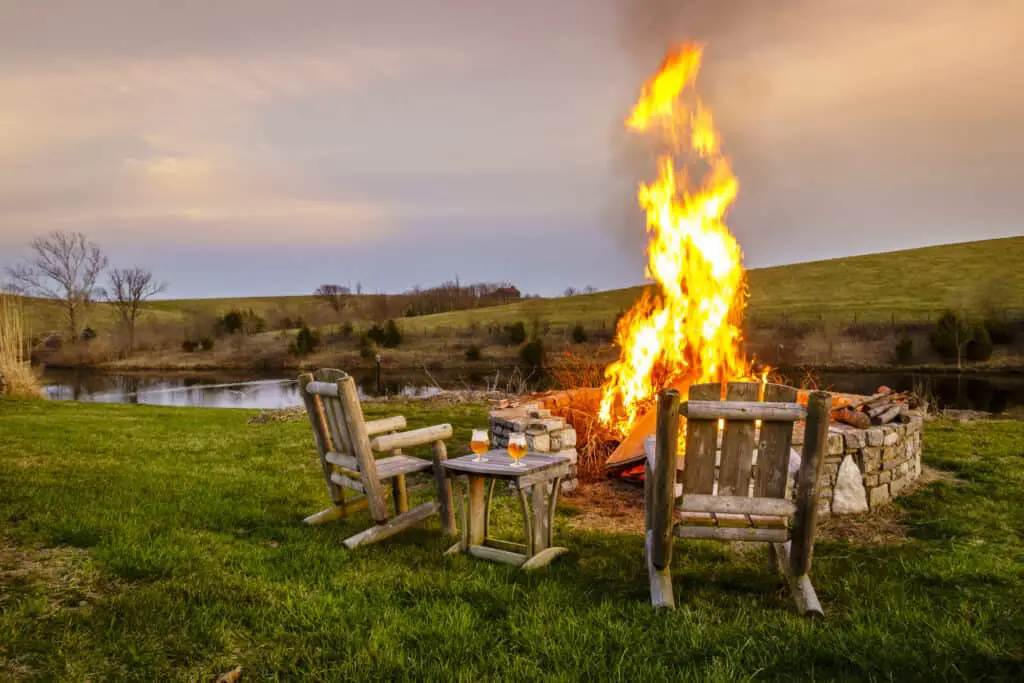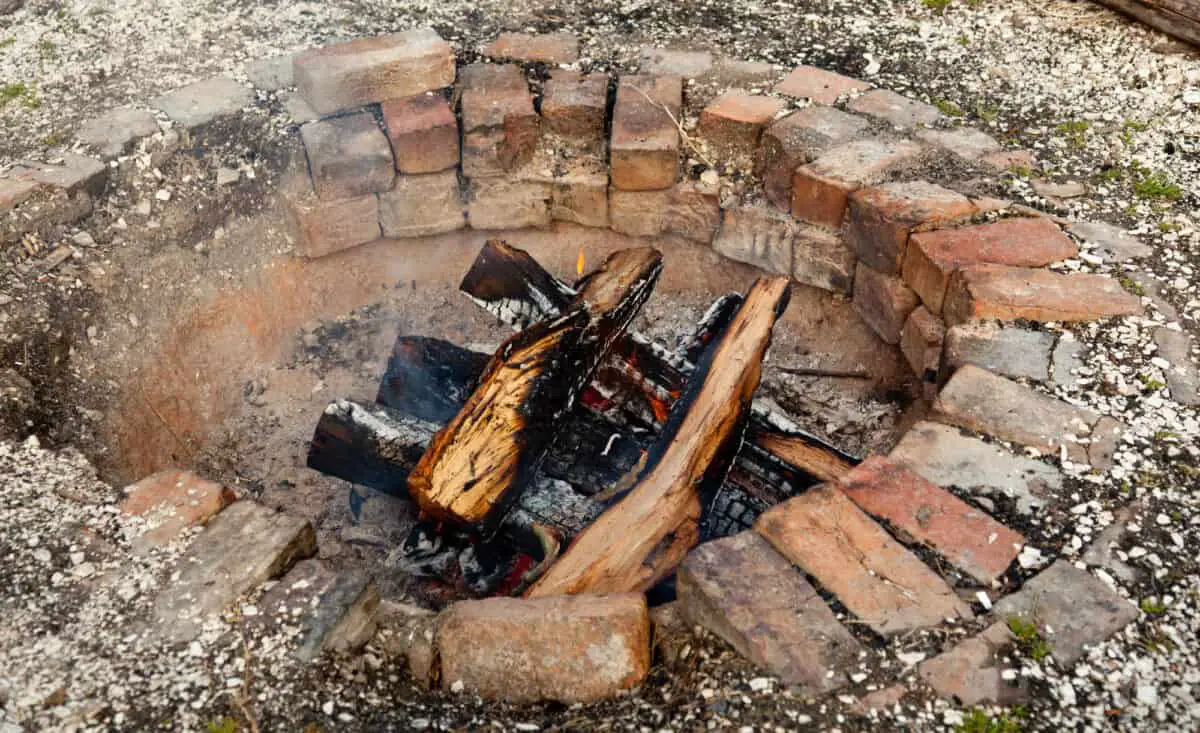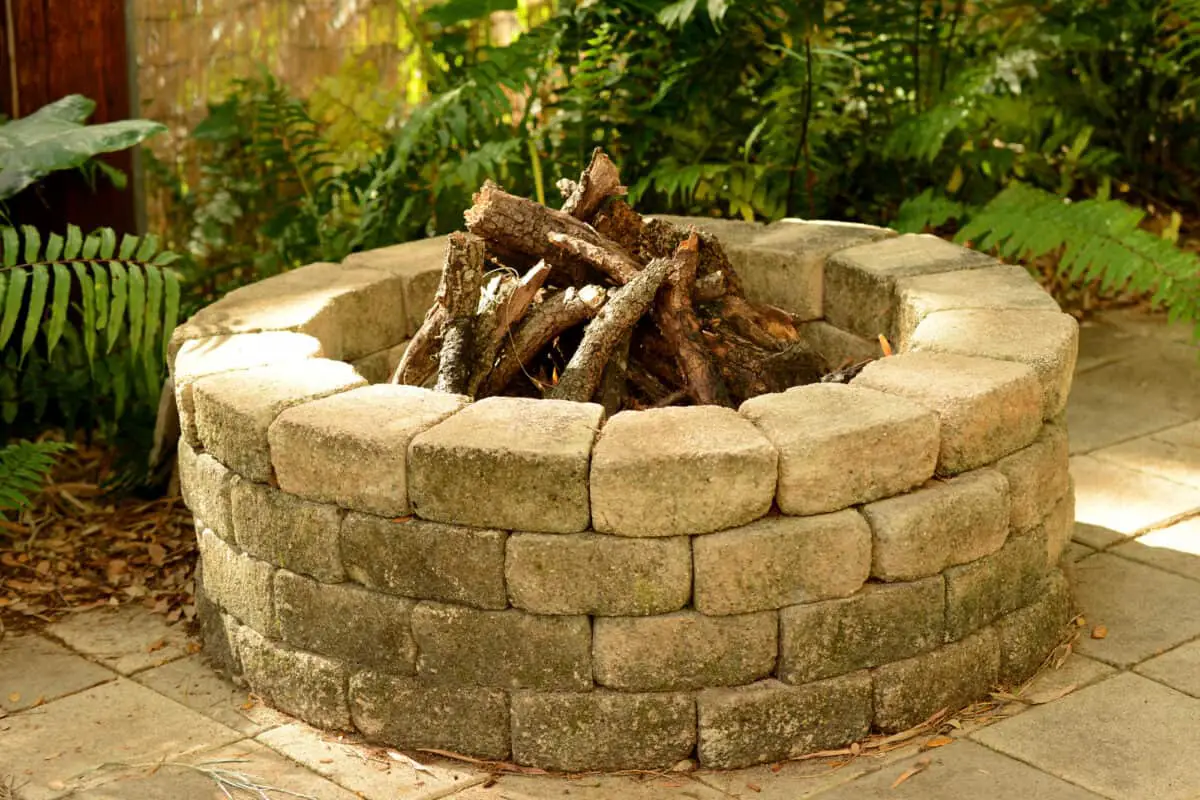Regarding fire pit safety, we will show the different types of outdoor fire pits, the potential dangers associated with them, and ways to avoid those hazards.
It can serve as a gathering spot for you and your loved ones, creating memorable experiences of summer nights spent roasting marshmallows or providing warmth during cold winter afternoons.
But homeowners and families alike often question the safety of outdoor fire pits.
When operated and maintained properly, outdoor fire pits pose minimal danger.
Understanding and following manufacturer guidelines is crucial for safety near open flames.
Still, while there are several ways to improve the overall safety of an outdoor fire pit, an open flame will likely pose a risk to property and life.

Table of Contents
Fire Pit Safety: What Are the Dangers?
Outdoor fire pits present safety risks to users, including:
- Heat-related injuries
- Accidental fire spread
- Carbon monoxide poisoning
Among the safety hazards to consider for fire pit owners, exploding propane tanks are less common.
However, the most frequently reported hazards are the three mentioned above.
Being aware of these potential risks can help you avoid them in the future. I have taken care to rectify any mistakes in spelling, grammar, and punctuation.
Related Reading: Essential Fire Pit Rules: 6 Smart Guidelines for Safety and Enjoyment
Heat-Related Injuries
While outdoor fire pits typically don’t transfer heat through their structure, they can still pose a danger due to their high temperature.
It is crucial to maintain a safe distance from active fire pits and limit young children and pets’ exposure to them.
These precautions are crucial to fire pit safety and can prevent unexpected burns and other heat-related injuries.
Accidental Fire Spread
Roasting marshmallows and hot dogs is a fun activity, but it can also be dangerous if the fire spreads to other items or parts of the yard.
Firepits often have air holes to increase airflow, but this can also allow burning debris to fly out and start a fire.
Fire pits can often damage surfaces such as patios or wooden decks.
When dealing with fire, always remain calm and use non-combustible materials when roasting food. Steel pokers are a fantastic alternative to wooden skewers.
Having a proper base and fire pit ring can prevent fire spread enhancing your fire pit safety program.
Carbon Monoxide
Wood-burning fire pits emit harmful carbon monoxide and smoke.
Choosing an alternative fuel source reduces inhalation risks. If burning wood, ensure it’s done in a well-ventilated area.

What Are Outdoor Fire Pits?
Fire pits are structures made from various materials used to safely contain fire and fuel.
Homeowners with ample outdoor space and limited tree cover often enjoy using outdoor fire pits for warmth and entertainment.
Some homeowners have fire pits on their decks for warmth and comfort.
The safety of an outdoor fire pit is heavily influenced by its construction and material.
Additionally, the type of fuel chosen can also impact fire pit safety.
However, even with appropriate fuel, a poorly constructed fire pit can quickly result in property damage and injury.
Therefore, it is crucial to accurately construct and select materials for an outdoor fire pit to ensure safety.
Outdoor Fire Pit Materials
Outdoor fire pits can be made from a variety of materials, but many homeowners prefer using two specific materials.
These materials are readily available, long-lasting, and can withstand high levels of heat.
- Stone and Brick
- Metal
The metal type used in outdoor fire pits varies by model, but fire brick and large paving stones are popular choices for those built with brick and stone.
The safest materials for fire pits tend to include sand, brick, and stone.
Metal can corrode and weaken, causing fires, while stone or brick remain durable. However, the ideal fire pit material depends on your preferences and budget.
Knowing this is crucial for your fire pit safety planning.
Brick and stone are affordable materials, but building a safe fire pit requires laborious stacking and securing.
Metal fire pits are easier to install and don’t damage lawns, but pre-made ones are pricier than DIY options.
Stone and Brick
Creating an outdoor fire pit can be a fulfilling, budget-friendly project.
Stone and brick fire pits can cause permanent changes to yard growth patterns, including killing grass beneath them.
Fire pits typically require only a few hours of labor and can cost under $100 to build. In addition, stone and brick don’t absorb as much heat as metal does.
They are highly insulative, minimizing heat transfer and reducing injury risk.
Metal
The most common metals used in outdoor fire pits are cast iron, copper, and stainless steel. These metals can withstand high heat and resist rust better than others.

However, that doesn’t mean the pit bottom can’t overheat and become structurally weak or that the equipment can’t rust.
Those who prefer the look and non-permanency of an outdoor fire pit can benefit from applying sand to the bottom of the pit before usage.
Doing so can help prevent heat damage and lengthen the life of the fire pit.
Sand can also reduce the safety risks associated with rust and overheated metal.
Adding sand may not be suitable for gas-powered or gel-fuel fire pits and fuel type determines necessary safety precautions.
Fuels Used With Outdoor Fire Pits
Besides the building material, outdoor fire pits are typically classified according to their fuel type. Most fire pits can be categorized into one of three fuel types:
- Wood
- Gas
- Gel
Each one of these fuel types has specific advantages and a few crucial drawbacks, and none are completely safe.
Although wood fuel is less likely to combust, it can produce harmful smoke.
Gas and gel can burn cleanly, but they can also be poisonous or explosive if used or stored incorrectly.
Wood
Wood is a commonly used and cost-effective option for outdoor fire pits.
Nevertheless, it is essential to acknowledge that burning wood in fire pits can release a dangerous quantity of smoke and airborne pollutants, even though wood chips and firewood are easily accessible and affordable.
Pine and cedar should never be used in outdoor fire pits due to their high sap content. When heated, the sap boils and pops, ejecting embers that can ignite nearby objects.
One of the greatest fire pit safety advantages of wood-burning fire pits is that they can be easily extinguished.
Although water can extinguish a wood-fuelled fire, it’s advisable to use sand, gravel, or a chemical extinguisher instead of water.

When water is poured on burning wood or charcoal, it can dislodge hot embers and cause injury, as well as create huge clouds of smoke.
Gas
Gas-fueled fire pits can be just as safe and dangerous as wood-fueled models, but the presence of a gas source does complicate matters.
Gas-powered outdoor fire pits can be fueled by either propane tanks or natural gas sources. Propane tanks require occasional refills and can be heavy to move.
Natural gas sources are more consistent but can also be more dangerous needing a strong fire pit safety plan.
Rather than using small canisters to light fire pits, natural gas users siphon fuel from a shared reservoir.
It may be easier for homeowners to turn off their home’s gas rather than handle a dangerous propane tank if fires get out of control.
When exposed to high heat and excess pressures, these tanks can explode.
Proper fire pit safety skills are essential to prevent rare occurrences.
Wood should never be used on gas fire pits.
Gel
Gel fuel is a safer and easier-to-store alternative to wood and propane for fire pits.
Gel fuel, despite its high cost, offers a relatively short burning time of one to three hours per can, making it one of the priciest choices available.
Still, most gel fuels are mostly alcohol, allowing them to burn hot without significantly affecting the surrounding materials.
Decorative rocks and pebbles are commonly used in gel-fuel fire pits due to their portability, lightweight, and modern design, making them a popular choice for homeowners seeking a contemporary outdoor experience.
Conclusion
When constructed with durable materials and fueled by clean-burning gases or gels, outdoor fire pits can be incredibly safe.
Constant attention and adult supervision are required when fire pits are active to prevent injury or damage.
Outdoor fire pits pose similar risks as kitchen stoves or lawnmowers when used incorrectly.
But when users use caution and care, fire pit safety risks are significantly reduced.
